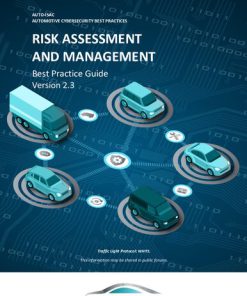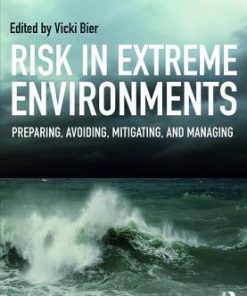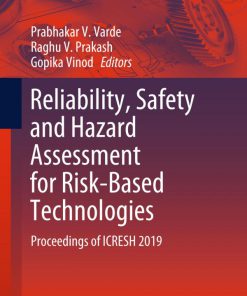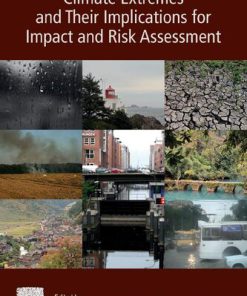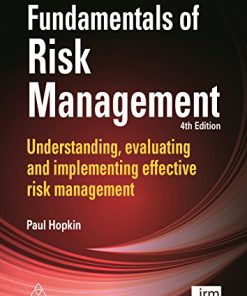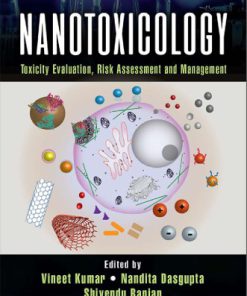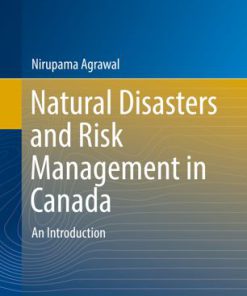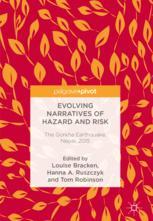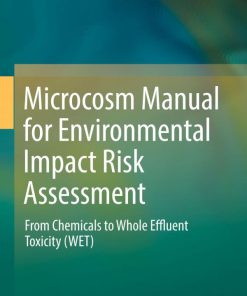Natech Risk Assessment and Management Reducing the Risk of Natural Hazard Impact on Hazardous Installations 1st edition by Elisabeth Krausmann, Ana Maria Cruz, Ernesto Salzano 0128038796 9780128038796
$50.00 Original price was: $50.00.$25.00Current price is: $25.00.
Natech Risk Assessment and Management. Reducing the Risk of Natural-Hazard Impact on Hazardous Installations 1st edition by Elisabeth Krausmann, Ana Maria Cruz, Ernesto Salzano – Ebook PDF Instant Download/Delivery: 0128038796, 9780128038796
Full download Natech Risk Assessment and Management. Reducing the Risk of Natural-Hazard Impact on Hazardous Installations 1st edition after payment
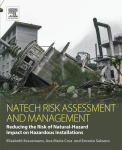
Product details:
ISBN 10: 0128038796
ISBN 13: 9780128038796
Author: Elisabeth Krausmann, Ana Maria Cruz, Ernesto Salzano
Natech Risk Assessment and Management: Reducing the Risk of Natural-Hazard Impact on Hazardous Installations covers the entire spectrum of issues pertinent to Natech risk assessment and management. After a thorough introduction of the topic that includes definitions of terms, authors Krausmann, Cruz, and Salzano discuss various examples of international frameworks and provide a detailed view of the implementation of Natech Risk Management in the EU and OECD.
Natech Risk Assessment and Management. Reducing the Risk of Natural-Hazard Impact on Hazardous Installations 1st table of contents:
Chapter 1: Introduction
Abstract
Chapter 2: Past Natech Events
Abstract
2.1. Characteristics of Natech events
2.2. Kocaeli Earthquake, 1999, Turkey
2.3. Tohoku Earthquake and Tsunami, 2011, Japan
2.4. San Jacinto River Flood, 1994, United States
2.5. Hurricanes Katrina and Rita, 2005, United States
2.6. Milford Haven Thunderstorm, 1994, United Kingdom
Chapter 3: Lessons Learned From Natech Events
Abstract
3.1. Data sources and quality
3.2. General Lessons Learned
3.3. Earthquakes
3.4. Tsunami
3.5. Floods
3.6. Storms
3.7. Lightning
3.8. Others
Chapter 4: Status of Natech Risk Management
Abstract
4.1. Regulatory Frameworks
4.2. Implementation of Natech Risk Reduction
4.3. International Activities
Chapter 5: Natural Hazard Characterization
Abstract
5.1. Introduction
5.2. Prediction and Measurement
5.3. Limitations, uncertainties, and future impacts of climate change
Chapter 6: Technological Hazard Characterization
Abstract
6.1. Introduction
6.2. Substance Hazard
6.3. Physical State of the Released Substance
6.4. Equipment Vulnerability
6.5. Conclusions
Chapter 7: Natech Risk and Its Assessment
Abstract
7.1. General Considerations
7.2. The Industrial Risk–Assessment Process
7.3. The Natech Risk–Assessment Process
Chapter 8: Qualitative and Semiquantitative Methods for Natech Risk Assessment
Abstract
8.1. RAPID-N
8.2. PANR
8.3. TRAS 310 and TRAS 320
8.4. Other methodologies
Chapter 9: Quantitative Methods for Natech Risk Assessment
Abstract
9.1. ARIPAR
9.2. RISKCURVES
Chapter 10: Case-Study Application I: RAPID-N
Abstract
10.1. Earthquake scenario
10.2. Chemical Facility Description
10.3. Natech Risk Analysis
10.4. Conclusions
Acknowledgments
Chapter 11: Case-Study Application II: ARIPAR-GIS
Abstract
11.1. Introduction
11.2. Case study 1: Natech Scenarios Triggered by Earthquakes
11.3. Case study 2: Natech Scenarios Triggered by Floods
11.4. Results of the case-study analyses
Chapter 12: Case Study Application III: RISKCURVES
Abstract
12.1. Introduction
12.2. Methodology
12.3. Description of the Case Study
12.4. Results and Discussion
12.5. Conclusions
Chapter 13: Reducing Natech Risk: Structural Measures
Abstract
13.1. Introduction
13.2. Prevention Measures
13.3. Mitigation Measures
Chapter 14: Reducing Natech Risk: Organizational Measures
Abstract
14.1. Organizational risk-reduction measures
14.2. Natech risk governance
14.3. Prevention and Mitigation
14.4. Emergency-Response Planning
14.5. Early Warning
Chapter 15: Recommendations and Outlook
Abstract
Glossary
People also search for Natech Risk Assessment and Management. Reducing the Risk of Natural-Hazard Impact on Hazardous Installations 1st:
certified risk manager certification tna
ccta risk analysis and management method
nac risk assessment
defense technical risk assessment methodology
defense technical risk assessment methodology (dtram)
Tags: Natech Risk, Assessment, Management, Natural Hazard, Hazardous Installations, Elisabeth Krausmann, Ana Maria Cruz, Ernesto Salzano
You may also like…
Computers - Security
Business & Economics - Personal Finance
Science (General) - International Conferences and Symposiums
Science (General)
Business & Economics - Personal Finance
Technique - Nanotechnology
Nanotoxicology : Toxicity Evaluation, Risk Assessment and Management First Edition Dasgupta
Science (General)
Politics & Philosophy - Government & Politics
Engineering - Environmental




